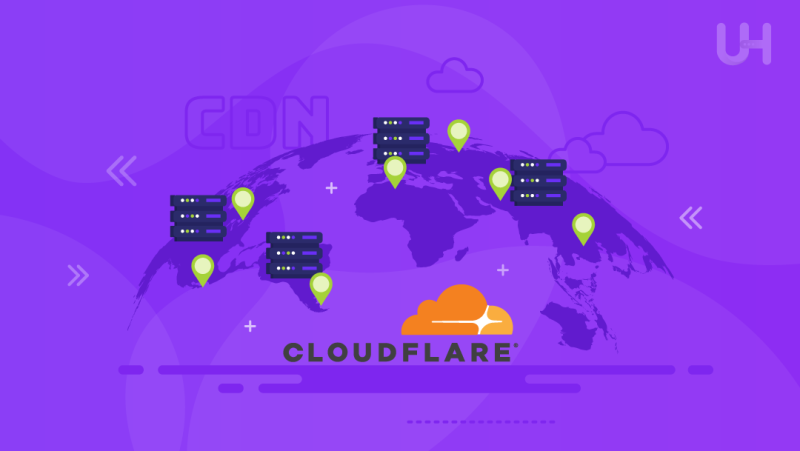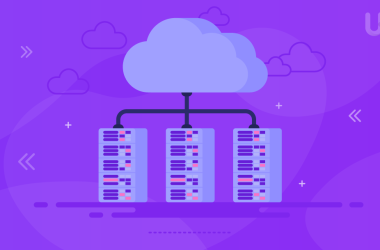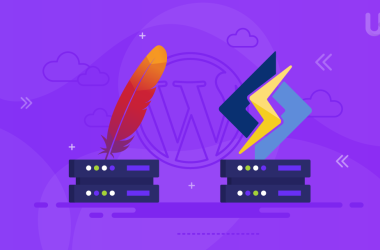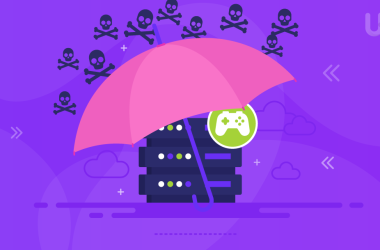Content Delivery Network (CDN) is a service consisting in installing website content and data in many edge servers connected in a network of reverse proxy servers. As a result, the website works faster, lowers your bandwidth consumption, and the importance of server location.
How does Content Delivery Network (CDN) work?
It’s best to show an example. Suppose you have a website hosted in German data centers. Customers from Germany, Poland, the Czech Republic, Austria, and other Central European countries connect after a relatively short distance, which does not cause significant delays in loading web content like photos, CSS, and JavaScript files.
All resources on the page are downloaded sequentially. Your visitor can download only several resources at once. If the client connects from a German, Czech, or Polish city, the website will work quickly without delays, and the hosting will not be burdened with queries unless your web traffic is not high.
However, if customers from remote corners of the world want to connect with the website, the loading process will last a few long seconds. It is a lot of time in the era of modern lightning-fast Internet. Content Delivery Network (CDN) solves this problem by storing customers’ websites using the closest nodes (CDN servers) to the visitors. As a result, the site works quickly anywhere in the world.
CDN optimization techniques
Shortening the connection path by a geographically distributed network is just one of the many techniques with which CDN services speed up and improve the transmission of static web content.
A considerable benefit is offloading the origin server. Deploying the website resources between several nodes (load balancing) makes the load process faster. The browser can only download a few files at a time from one web server, and the following files are waiting for their turn. With CDN edge servers, the browser will load the website resources simultaneously.
Using a CDN gives you significant advantages and reduces the importance of the server somewhat, but not completely. Especially when a lot of your content is dynamic. Therefore, the location of the server is important and needs to be carefully considered.
Skillful use of a Content Delivery Network makes it possible to separate traffic. When the user requests to load web content resources, the load balancing technique distributes the request to network edge and origin servers.
Content Delivery Network uses the closest edge server for the user to load static content, but HTTP requests, dynamic content, and logic are loaded from the origin server. As a result, the page loads much faster. It increases the web performance, and the origin server is relieved of serving static content lowering bandwidth costs.
In this case, it does not matter whether the clients connect from abroad or from the same country where the origin server is located. Speeding up and unloading the server will be a positive effect of using CDN services.
In addition, the Content Delivery Network edge is a colossal advantage for high-traffic websites. When the traffic is massive, it may be possible to handle a client’s request from Wroclaw using two CDN servers, e.g., in Warsaw and Frankfurt.
Speed, SEO, and website security
The Content Delivery Network is optimized for faster file uploads. The core network infrastructure transfers heavy files quickly without cookies by the CDN edge servers.
Therefore, the TTFB times are much shorter than other operational servers. Faster CDN operation is possible because of the lack of up and down transfer limits.
Some hosting providers set transfer limits on shared hosting and cheap VPS as a part of a fair use policy. The same is with the number of simultaneous connections. Good quality hosting focuses on performance and customer satisfaction, investing in high-quality infrastructure and allocating sufficient resources to the server. Overselling characterizes poor hosting providers that save on hardware.
But even high-quality web hosting can gain a lot by using a decent Content Delivery Network. Top CDN providers offer services of high quality. The best are Google Cloud, Amazon AWS (CloudFront), Cloudflare, KeyCDN, and MaxCDN.
The quality of CDN providers is measured primarily by the number of servers and their geographical distribution. Therefore, CDN providers must take care of the number of data centers and their appropriate distribution around the world. Loading the web page from multiple servers is the most crucial advantage of CDN services.
As you know, speed is one of the critical parameters in SEO. It is probably the tenth time I’ve written about it on this blog. Google takes into account how fast the website works, so Content Delivery Network translates into better website positions in the search engine.
However, using a CDN is not everything. Check out other ways to speed up your website and improve your SEO ranking.
CDN also means security. The Content Delivery Networks protect against flooding with unnatural requests. It makes the website immune to DoS and DDoS attacks (Distributed Denial of Service), which block the server using all available resources to increase network traffic above the server potential.
Benefits of using CDN services
So let’s summarize all the benefits of using a Content Distribution Network mentioned in this article:
- Eliminating delays in website operation thanks to multiple geographical locations;
- Shorter TTFB times due to no redirects and optimization for serving static content;
- Faster transfer up due to no artificial transfer limits;
- Reduce bandwidth consumption of the origin server;
- Ability to download multiple media files at once and deliver content faster;
- Speedup resulting from the elimination of the download queue by file allocation;
- Positive impact on user experience. The website works faster, resulting in better conversion;
- Better positions in the search engine because of the increased speed and content availability;
- Increased security and automatic protection against DDoS attacks;
- Reducing bandwidth costs and allowing you to choose a lower hosting plan.
Does CDN have any disadvantages? It’s hard to find downsides to CDNs. Overall, it is an outstanding solution. Nevertheless, every solution always involves some sacrifices.
- Improper installation (e.g., by changing DNS) may lead to errors on the website;
- The additional cost of maintaining the service or the need to purchase a higher hosting option;
- Difficulties in development work – it is an example of functional partitioning of the CDN server;
- Additional devices to manage by API (clear the cache memory, perform automatic invalidation, etc.).
Choose VPS hosting from UltaHost and get CDN Cloudflare at no extra cost. Faster page loading for users from around the world and increased protection against DDoS – all for free!
When is it worth using Content Delivery Networks?
CDN is a practical solution. However, there are situations where the CDN acquires special values. If your website is on the list below, you should deliver content with CDN.
- Multilingual websites with foreign traffic;
- Online stores, social media sites, or frequently visited websites;
- Pages with multimedia web content: photos, videos, and frequently downloaded files;
- Pages vulnerable to DDoS attacks – popular websites and sites with valuable data.
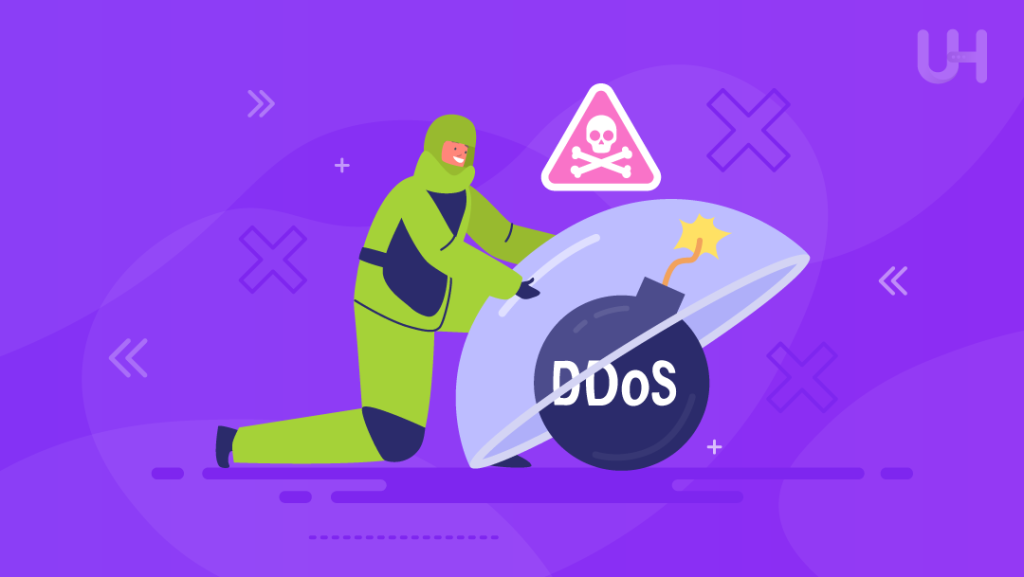
Myths about Content Delivery Network servers
There are quite a few myths about Content Delivery Networks that come from the lack of understanding of the idea and the lack of skills to use the website server. Some network operators and developers prefer to make excuses rather than learn new technologies or admit that their offer does not meet modern quality standards.
CDN only makes sense for international traffic
Shortening the connection path by a globally distributed network is just one of the few techniques to optimize data transmission between the nearby CDN server and the end user. CDN also means faster origin server responses and better load times due to reducing its burden.
Faster data downloading is possible thanks to the lack of limits and faster internet connection. It is worth using CDN even when traffic comes from the same country because even then CDN increases website performance.
The best CDN is X
It is hard to arbitrarily select the best CDN providers without knowing the specifics of a given site and data on incoming traffic – not only the origin of users but also their behavior and downloaded page resources. Therefore, website owners must make their decisions about choosing the right provider.
It is a simple service and when choosing a specific CDN provider, you should analyze the number of nodes, price, ease of use, and performance. If you have detailed data on the origin of users, you can choose a provider based on physical distance.
All these elements you can verify before purchase. It is not true that X’s service is the best because it all depends on your specific case, e.g., localization of your server and your clients, your website content, and the rate of static to dynamic content.

To use it you need to choose a specific hosting company
CDN is an independent service from the hosting. You can choose one of the best CDN providers without asking your hosting provider.
However, it must be admitted that some hosting companies cooperate with certain CDN providers. Using the services of a selected brand can significantly facilitate their integration or achieve a more favorable price of services, but a reliable CDN works with any hosting.
CDN is expensive or not worth using for small sites
The cost of CDN for small websites is negligible, which is why it is even more profitable to use it. In the case of a website with 100,000 page views per day, it’s a few dollars a month.
Conclusion
CDN is a very effective way to speed up page loading and minimize the cost of maintaining websites and stores with relatively high traffic on origin servers. It is worth using it wherever speed, user experience, and security are a priority. Especially when the share of static internet content is predominant.
The advantages of using a CDN far outweigh the disadvantages, which are not always applicable. Especially when the Content Delivery Network is one of the elements of the hosting service. It is the case with the UltaHost offer.
All hosting plans offer CDN services from Cloudflare for free. It is the largest CDN network with over 190 servers scattered around the world, which, in addition to the largest network of servers, has additional security systems against DDoS attacks. This way UltaHost’s already bulletproof hosting gets an extra layer of DDoS protection.
Cloudflare CDN is enabled at the moment when you are buying your hosting at UltaHost. You can disable it, but why? There is only one advantage in that situation: you get hosting plan with free Cloudflare CDN.
In addition to the CDN, UltaHost also offers the highest level of security and outstanding performance. Choose DDoS Protected VPS Hosting and get 24/7 support from our support team. Our powered infrastructure focuses on auto-scaling, speed, and security. Let us show you the difference! Check out our plans!





